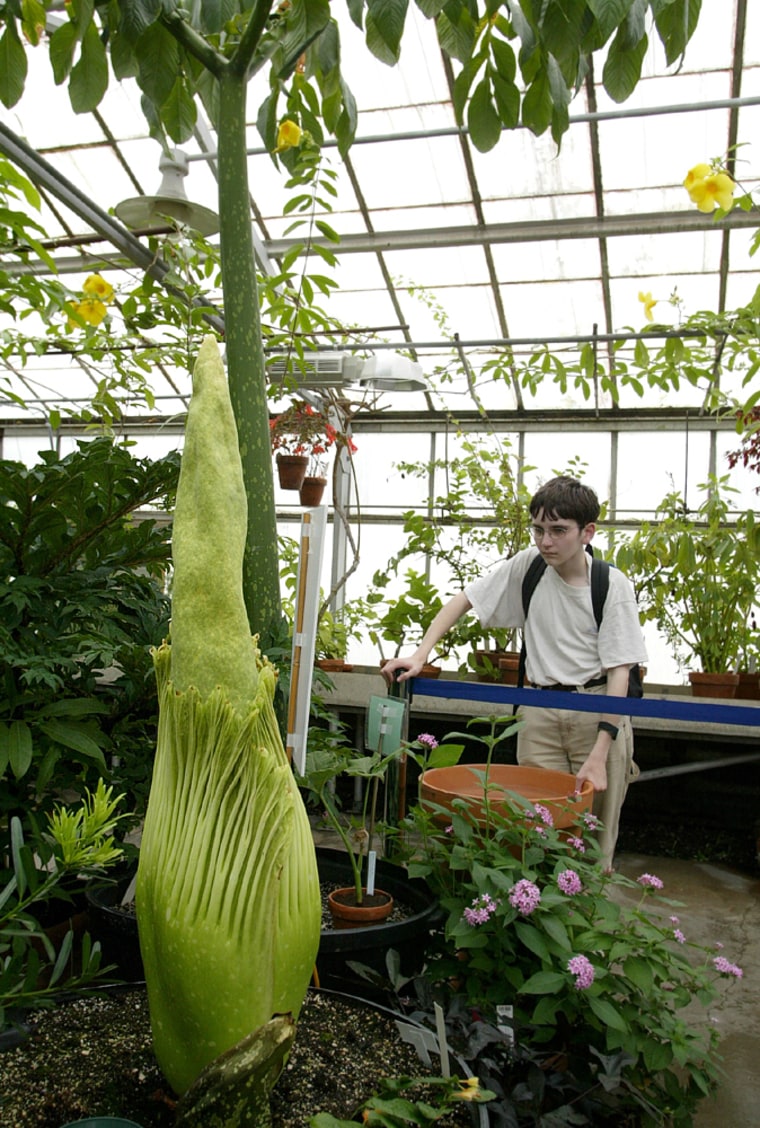Wait until the neighbors get a whiff of this. A giant exotic plant that has not bloomed in the Northeast in more than 60 years is ready to flower at the University of Connecticut's greenhouses. The "corpse flower" has the odor of 3-day-old road kill, and UConn botanists couldn't be more excited.
Once open, the spiked, bright red bloom even resembles rotting meat, a veritable welcome mat for the insects that pollinate it, flies and carrion beetles.
"It looks like something has died. It smells like something has died. It has some of the same chemicals that dead bodies produce," UConn research assistant Matthew Opel said Tuesday.
The corpse flower (Amorphophallus titanum) at UConn was planted 10 years ago and was part of a group of seeds brought to the United States from its native Sumatra by botanical explorer James Symon.
The plant is expected to blossom in the next five to six days. Until it blooms, it's almost odorless. Already at 4 feet high, the flower could reach more than 6 feet high and at least that wide when it opens up.
The stinky botanical curiosity is expected to attract visitors like ... well, flies.
The blossom lasts just two days before it begins to disintegrate, and UConn plans to extend visiting hours at the research greenhouse to accommodate the nosy. For the weak-stomached, a Web cam on the UConn Internet site provides odorless footage of the flower.
The UConn flower will be the seventh to bloom nationwide since 1999, although it's the first in New England and the second in the Northeast since 1937.
